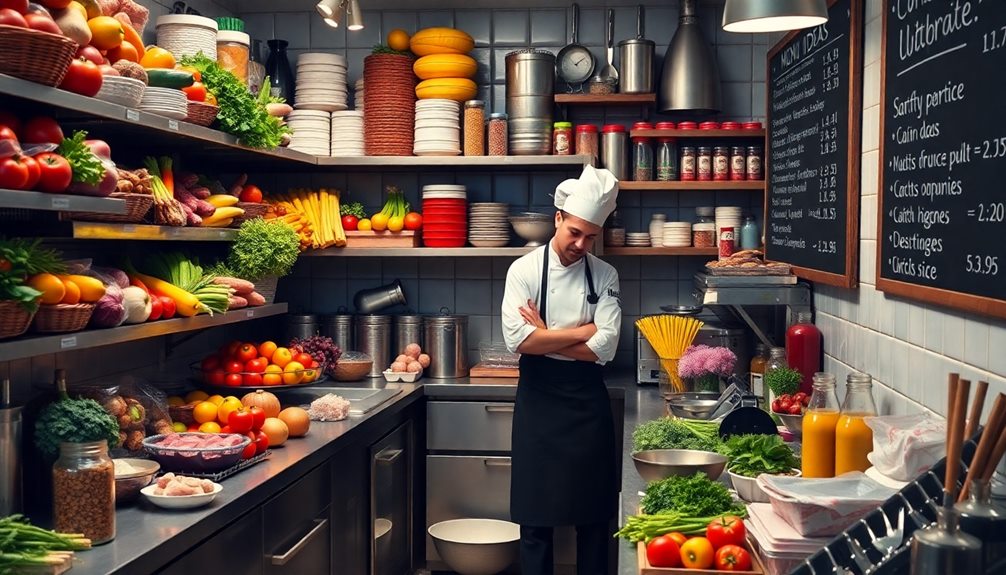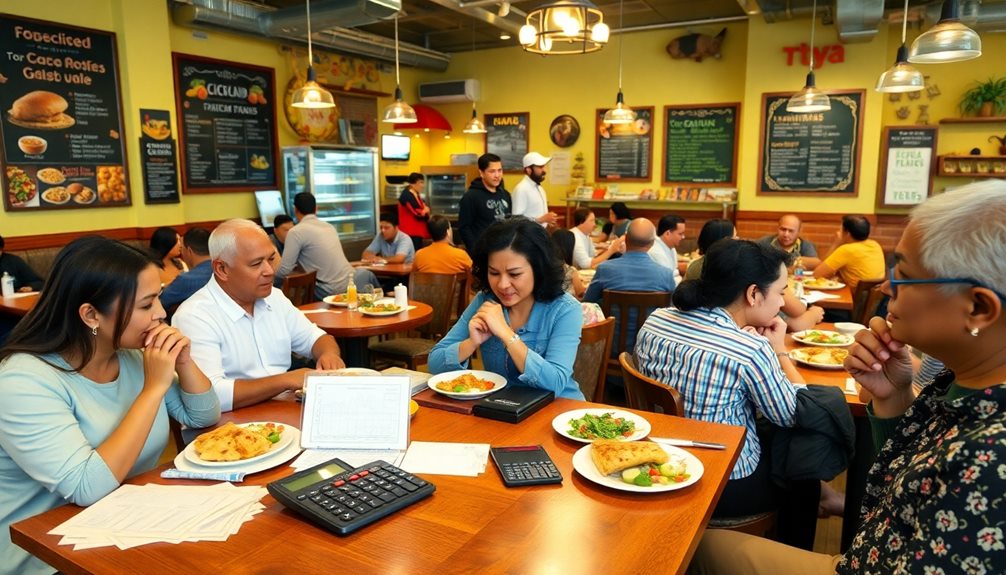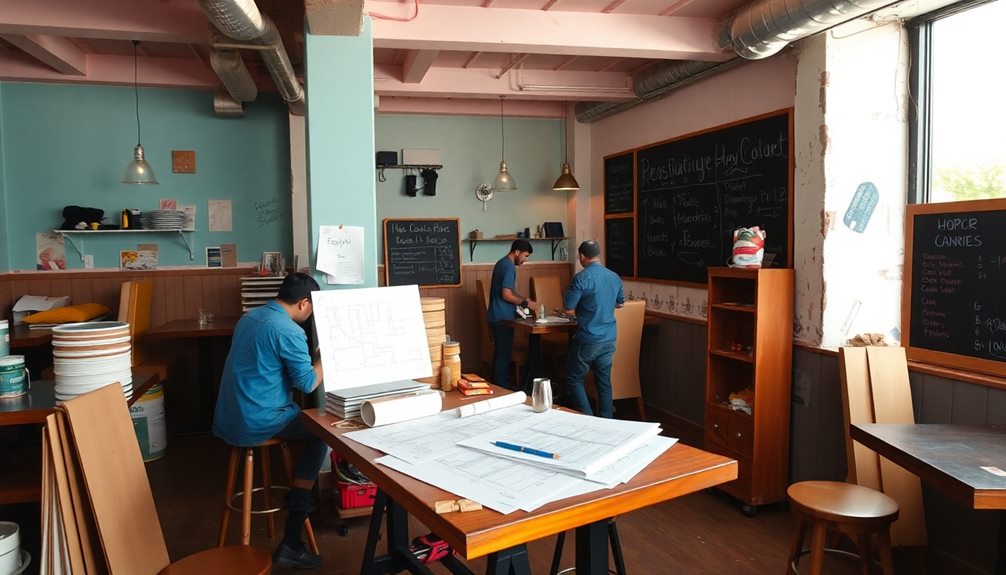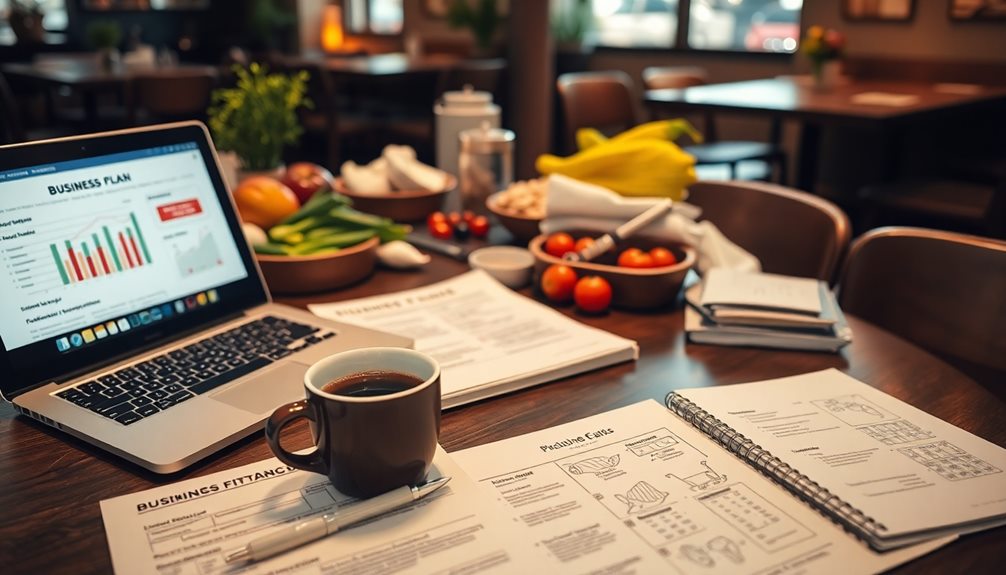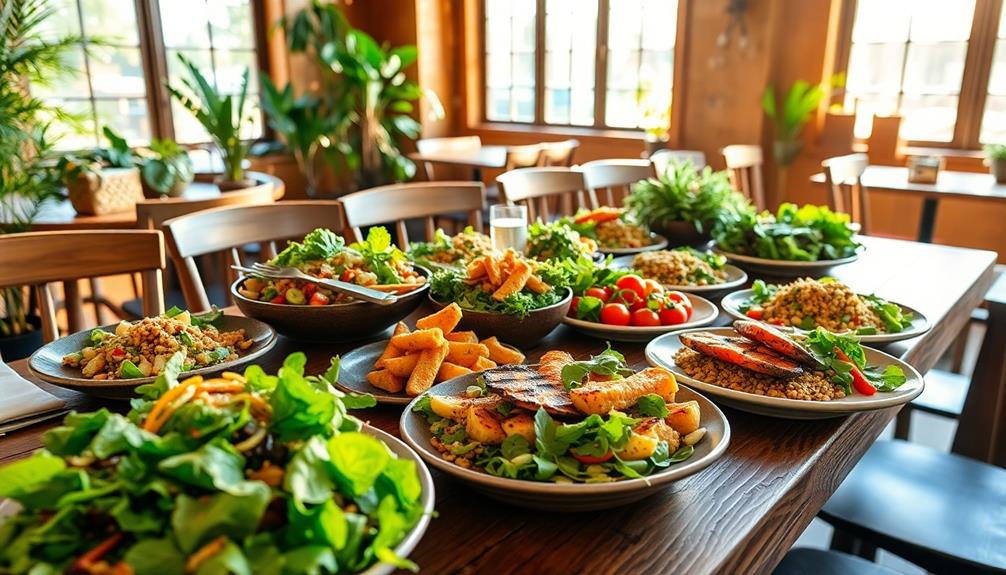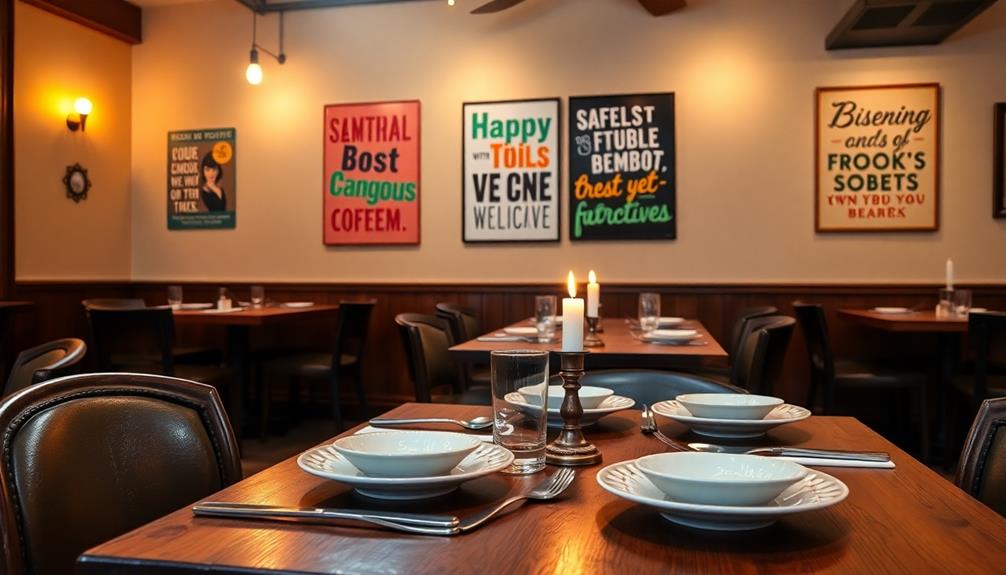To reduce restaurant food costs, you should start by tracking your food costs and analyzing your menu for profitable items. Optimize your inventory management to minimize spoilage, and build strong relationships with suppliers for better pricing. Control portion sizes to enhance customer satisfaction while reducing waste. Implement strategies to lower food waste, such as donating excess food and using all parts of ingredients. Leverage data to forecast demand accurately, and train your staff on cost efficiency practices. By making these changes, you can effectively manage costs and boost your bottom line. Discover more ways to optimize your operations.
Key Takeaways
- Track food costs and conduct menu audits to identify waste reduction opportunities and optimize profit margins.
- Optimize inventory management with daily checks and a FIFO system to reduce spoilage and overordering.
- Build strong supplier relationships to negotiate better pricing and explore local sourcing for fresher ingredients.
- Control portion sizes through standardization and staff training to minimize waste and enhance customer satisfaction.
- Leverage data analytics to forecast demand accurately and adjust menus based on sales trends and customer preferences.
Track and Analyze Food Costs

Tracking and analyzing food costs is essential for maintaining a profitable restaurant. To start, you need to regularly track your Cost of Goods Sold (CoGS) to calculate the food cost percentage, aiming to keep it between 25% to 35%. This range helps you maintain healthy profit margins.
Utilize digital tools to centralize data on purchasing and inventory management, allowing for real-time analysis of spending patterns and cost trends.
Conducting menu audits is another key step. Monitor dish performance over time by comparing the popularity of items against their production costs. This way, you can make informed decisions about menu offerings.
Additionally, analyze food costs by comparing actual costs to theoretical costs, which helps identify areas where you can improve and reduce waste.
Implement regular inventory checks to guarantee accurate tracking of ingredient usage. This will also help you identify slow-moving items that may need adjustments on your menu.
Optimize Inventory Management
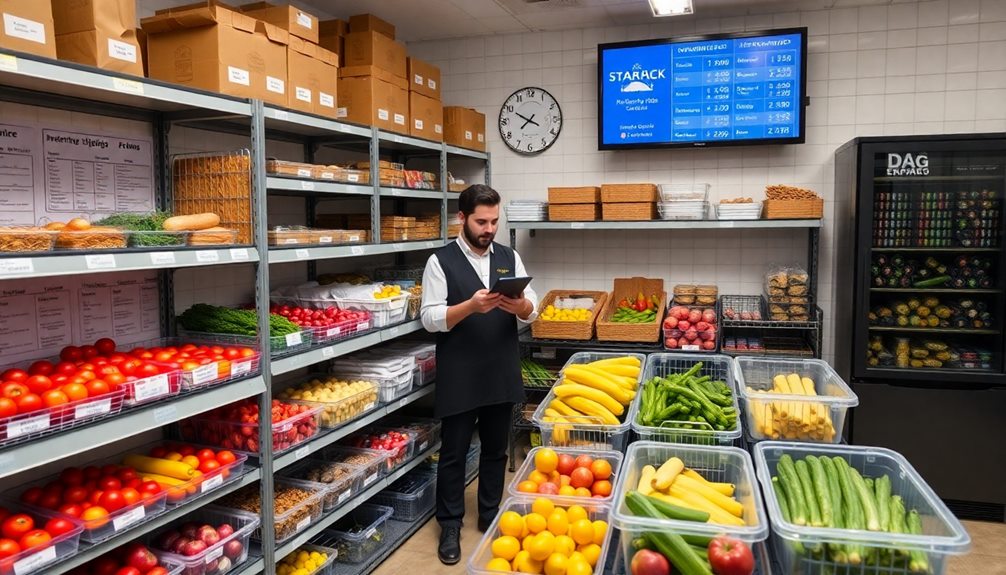
To maintain profitability, enhancing inventory management is just as important as keeping a close eye on food costs. Start by conducting daily inventory checks at the same time to guarantee consistency in your ingredient tracking and waste levels. Utilize inventory tracking software to gain real-time insights into stock levels, which will help you make necessary menu adjustments to minimize waste.
Implement a first-in, first-out (FIFO) system to confirm older stock is used before newer deliveries, reducing spoilage. Establishing par levels for each ingredient helps maintain ideal stock levels, preventing overordering that leads to excess waste and increased costs.
Here's a quick reference table to illustrate these points:
| Inventory Management Strategy | Benefits |
|---|---|
| Daily Inventory Checks | Consistency in tracking usage |
| FIFO System | Minimized spoilage and waste |
| Par Levels | Ideal stock levels maintained |
| Inventory Tracking Software | Real-time data for decision-making |
| Supplier Analysis | Negotiating better rates |
Build Supplier Relationships
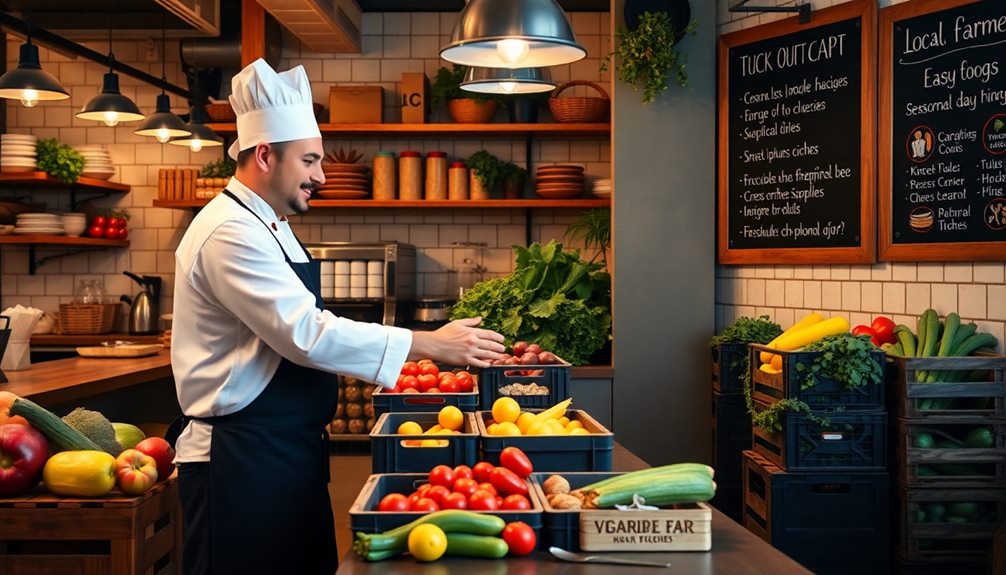
Building strong relationships with your suppliers can greatly cut your food costs.
Start by establishing open communication, so you're always updated on pricing and availability.
Don't hesitate to negotiate better terms and explore local sourcing options for fresher ingredients at lower prices.
Establish Open Communication
Strong supplier relationships are essential for any restaurant aiming to reduce food costs effectively. One of the most critical aspects of these relationships is establishing open communication. By fostering an environment where dialogue flows freely, you can negotiate better pricing, gain access to discounts, and tailor terms that work for both parties.
Regular communication allows you to discuss bulk purchase discounts and stay informed about market trends that affect ingredient prices.
Additionally, clear communication promotes trust and transparency, leading to priority access to high-quality and seasonal ingredients. This, in turn, helps maintain consistent menu offerings while controlling costs.
Collaborating with suppliers on inventory management can greatly reduce spoilage by ensuring just-in-time deliveries of fresh ingredients. This not only minimizes waste but also enhances the quality of food served.
Key strategies for establishing open communication include:
- Scheduling regular check-ins with suppliers
- Sharing your menu offerings and seasonal needs
- Discussing inventory management practices
- Being transparent about any discrepancies in billing
- Staying informed about market trends affecting ingredient costs
Negotiate Pricing Terms
Regularly negotiating pricing terms with your suppliers is key to managing food costs effectively. By building strong relationships, you can gain better pricing options that benefit your bottom line. Consistent communication allows you to discuss bulk discounts and favorable payment terms, making it easier to keep costs down.
Take the time to review supplier performance and pricing regularly. This practice can reveal opportunities for renegotiation, especially when market trends indicate lower costs for certain ingredients.
Establishing a reliable network of multiple suppliers lets you compare pricing and quality, which strengthens your position when negotiating with your current supplier.
Engage your suppliers in discussions about seasonal products. They may offer discounts on perishable items that need to move quickly, saving you money.
Additionally, maintaining transparency in purchasing needs and sales forecasts fosters trust, leading to mutually beneficial arrangements. For instance, price locks on key ingredients can help you avoid unexpected price hikes.
Incorporating these strategies into your supplier relationships not only reduces food costs but also enhances the overall efficiency of your restaurant operations.
Don't underestimate the power of a strong partnership with your suppliers!
Explore Local Sourcing
Local sourcing can transform your restaurant's food cost management and enhance your menu's quality. By building strong relationships with local suppliers, you can access fresher ingredients and better pricing. This approach not only supports community agriculture but also streamlines your restaurant operations.
Consider these benefits of local sourcing:
- Better Pricing: Establishing rapport with suppliers can lead to negotiating discounts on bulk purchases.
- Fresher Ingredients: Local products often boast superior taste and quality, elevating your menu without hefty price increases.
- Reduced Transportation Costs: Shorter travel times minimize expenses associated with delivery.
- Less Food Waste: Sourcing locally helps reduce food waste by ensuring ingredients have longer shelf lives and shorter supply chains.
- Community Connection: Supporting local producers fosters brand loyalty among customers who prefer businesses that benefit the local economy.
Utilizing inventory data effectively can help you track seasonal items available through local sourcing, ensuring you take advantage of the freshest offerings.
Control Portion Sizes
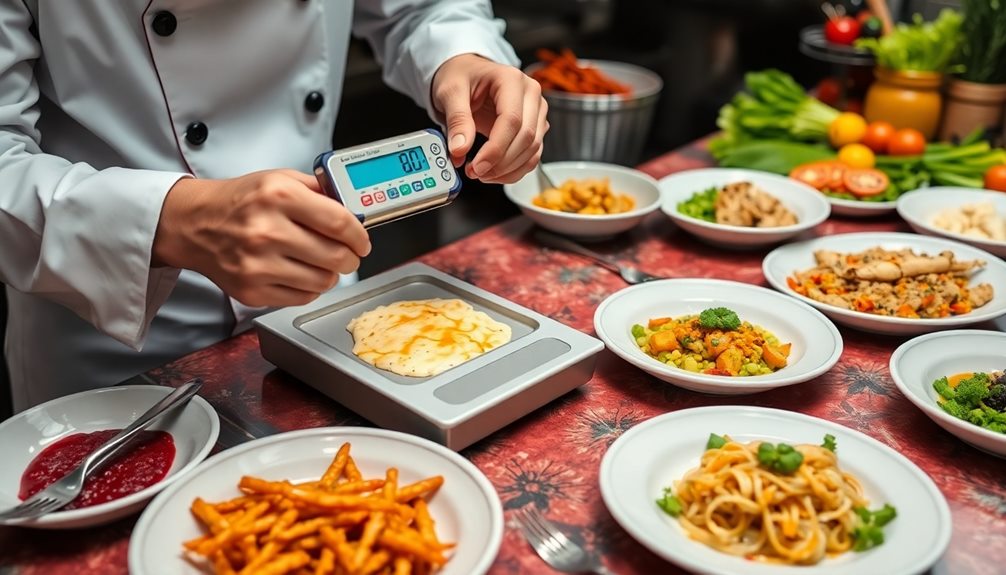
When you control portion sizes in your restaurant, you not only enhance customer satisfaction but also greatly cut down on food costs. Implementing standardized portion sizes can lead to a food cost reduction of up to 20%, which is a significant boost to your bottom line.
By utilizing measuring tools like portion spoons and scales, you can accurately forecast serving sizes and minimize over-serving, effectively controlling costs.
Training your staff on portion control techniques is essential. When they understand the importance of adhering to standardized portion sizes, you'll likely see a decrease in food waste and an increase in profitability.
Adjusting portion sizes based on customer consumption patterns can also enhance satisfaction while keeping your food costs within the ideal threshold of 25% to 35%.
Regularly reviewing portion sizes against customer feedback allows you to identify opportunities for adjustments, optimizing both cost management and guest experience.
Reduce Food Waste
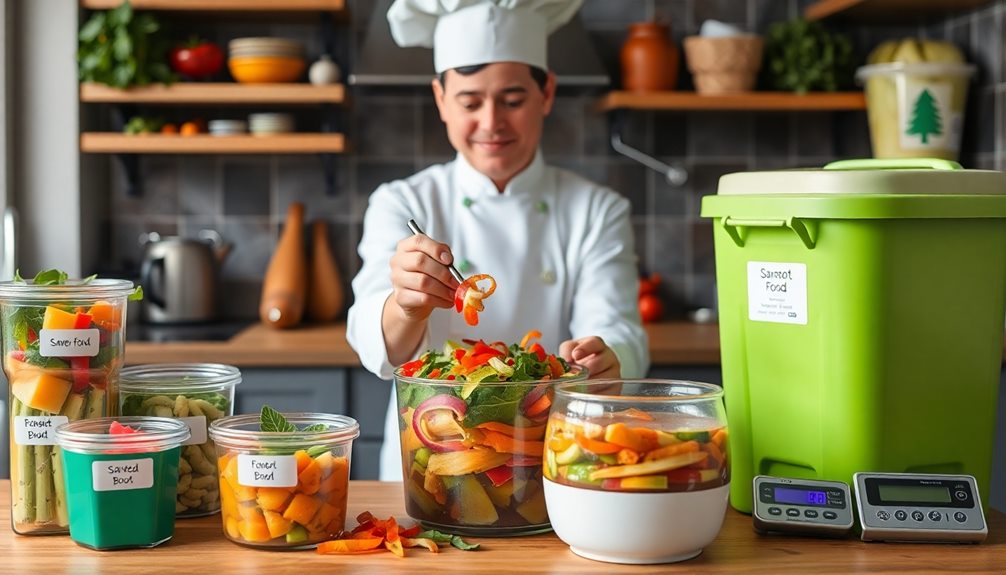
Reducing food waste is crucial for maximizing your restaurant's profitability and sustainability. By implementing effective strategies, you can greatly lower your food costs while enhancing your menu offerings.
Here are some practical ways to reduce waste in your restaurant:
- Conduct waste audits to identify sources of food waste and target strategies to reduce it by up to 30%.
- Utilize root-to-stem cooking techniques, making the most of all vegetable parts, which can also create unique dishes that attract customers.
- Regularly train your staff on portion control and proper food handling techniques; studies show this can save restaurants up to 20% on food costs.
- Donate unsellable but still edible food to local shelters or food banks, which not only reduces waste but also strengthens community ties and offers potential tax deductions.
- Implement a first-in-first-out (FIFO) inventory system to guarantee older stock is used first, minimizing spoilage and maintaining ingredient freshness.
Leverage Data for Forecasting

Harnessing data for forecasting can transform how you manage food costs in your restaurant. By utilizing historical sales data, you can accurately forecast demand, which helps you align prep quantities with expected customer traffic. This reduces overproduction and minimizes waste.
Implementing AI-driven forecasting tools enhances prediction accuracy by analyzing sales trends, seasonality, and external factors, ensuring ideal inventory levels and reducing the risk of stockouts. In addition, employing AI-driven insights can help you identify patterns in customer behavior, allowing for even more precise adjustments to your inventory strategy.
Regularly reviewing and adjusting your forecasts based on real-time data allows you to adapt to changing customer preferences and market conditions. This leads to more informed purchasing decisions and better inventory management. By integrating data analytics, you can identify slow-moving items and adjust your menus accordingly, optimizing both food costs and customer satisfaction.
Moreover, accurate forecasting improves staff scheduling by aligning labor needs with predicted demand. This way, you can avoid unnecessary labor costs associated with overstaffing during slow periods.
In short, leveraging data for forecasting not only helps you reduce waste but also enhances your overall operational efficiency in your restaurant.
Enhance Menu Profitability
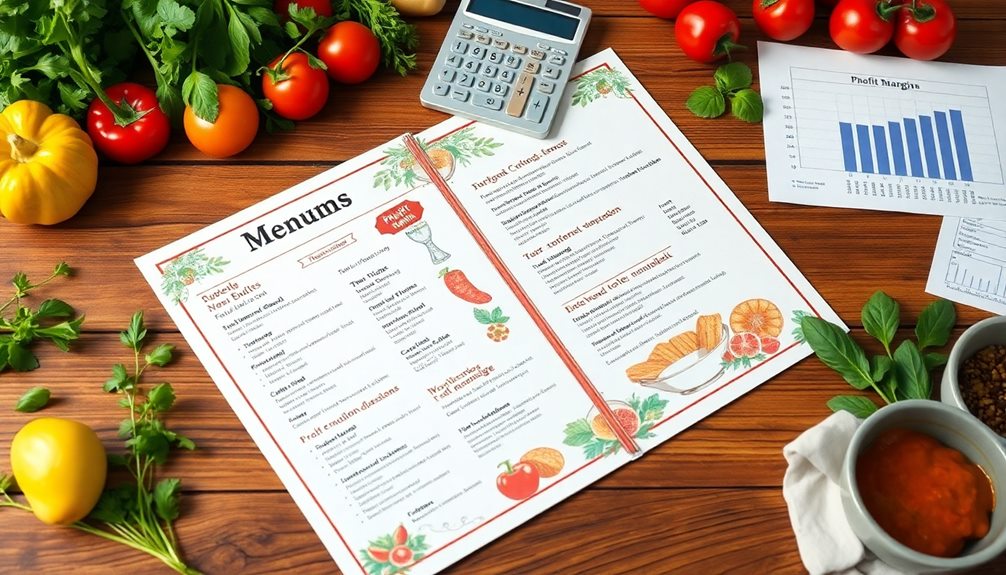
To enhance your menu profitability, start by optimizing your item selection to focus on high-margin dishes.
Analyze portion sizes carefully to guarantee consistency and reduce waste, while implementing menu engineering techniques to highlight your best offerings.
Optimize Menu Item Selection
Optimizing your menu item selection can greatly boost your restaurant's profitability. Start by conducting a detailed menu analysis to identify your best-selling items while eliminating low-performing dishes. Aim for a food cost percentage below 35% to maximize returns.
Employ menu engineering techniques to showcase high-margin items prominently on your menu, strategically positioning them for increased visibility. Additionally, consider drawing inspiration from successful camping meal ideas that emphasize simplicity and flavor, which can help you create appealing dishes that resonate with customers.
Consider these strategies to enhance your menu selection:
- Utilize seasonal ingredients for cost-effective, fresh offerings.
- Introduce limited-time offers (LTOs) that highlight high-margin dishes.
- Regularly adjust portion sizes based on customer preferences to minimize waste.
- Analyze sales data to refine your menu and improve dish performance.
- Focus on waste reduction through careful inventory management.
Analyze Portion Sizes
Understanding and analyzing portion sizes is key to enhancing your restaurant's profitability. By standardizing portion sizes with measuring tools, you can reduce food waste and guarantee your menu items remain profitable. Studies show that proper portion control can decrease food costs by up to 20%.
Implementing a first-in-first-out (FIFO) inventory system helps manage your stock effectively, making certain older ingredients are used first, which reduces spoilage and enhances freshness.
Regularly reassessing portion sizes based on customer consumption patterns allows you to adjust servings according to demand, minimizing leftovers and improving overall profitability.
Educating your staff on precise portion control techniques leads to consistent servings, helping maintain food cost percentages within a healthy range of 25% to 35%.
Utilize digital recipe tools to store and standardize recipe data, assuring accuracy in portion sizes. This directly impacts profitability by making sure each dish is cost-effective to produce.
Implement Menu Engineering Techniques
Menu engineering is a powerful strategy that can greatly boost your restaurant's profitability. By analyzing the performance of your menu items based on popularity and profitability, you can optimize your offerings while keeping food costs below 35% for high-demand dishes.
Here's how to implement effective menu engineering techniques:
- Identify and promote high-margin items that entice customers.
- Utilize limited-time offers (LTOs) to feature seasonal ingredients and create urgency.
- Regularly update your menu based on sales data to streamline offerings.
- Focus on best-selling items that contribute positively to your bottom line.
- Gather customer feedback to refine menu items continuously.
Train Staff on Cost Efficiency
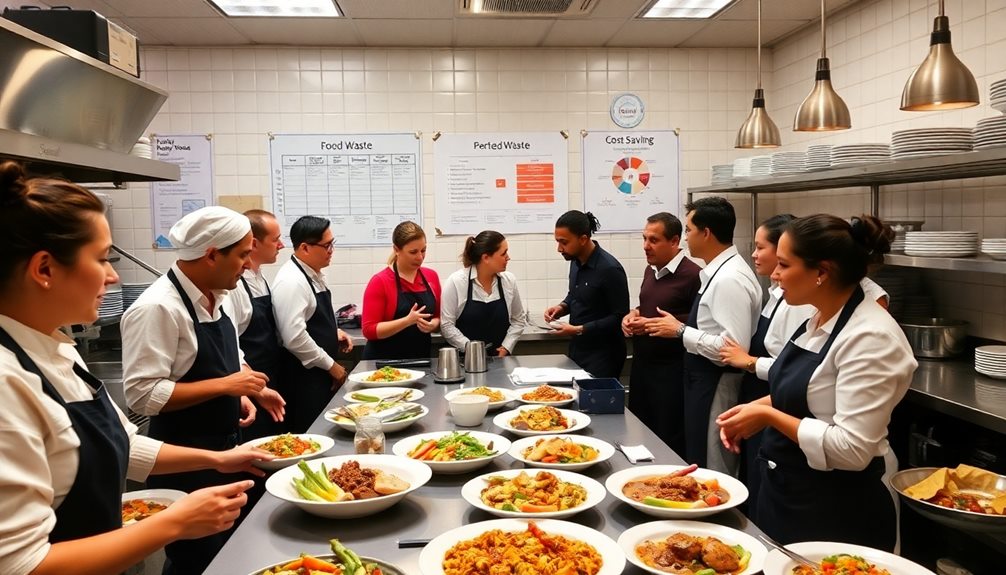
How can training your staff on cost efficiency transform your restaurant's bottom line? By equipping your team with the right knowledge and skills, you can greatly lower food costs and enhance profitability.
Start by conducting regular training sessions that emphasize the importance of minimizing waste and maximizing ingredient utilization. Implement portion control training, using tools like portion spoons and scales, to guarantee accurate serving sizes. This simple step can drastically reduce food waste while maintaining customer satisfaction.
Encourage a culture of open communication where your staff can share cost-saving ideas based on their daily experiences. Train them on FIFO (first-in, first-out) storage methods to prioritize older ingredients and reduce spoilage.
Additionally, inspire creativity by encouraging your team to use leftovers in daily specials or staff meals. This practice not only saves costs but also fosters a sense of teamwork and sustainability.
Frequently Asked Questions
What Is One Strategy to Reduce Food Cost in a Restaurant?
One effective strategy to reduce food costs is to implement portion control. By standardizing serving sizes and using measuring tools, you'll minimize waste, maintain consistency, and ultimately save money while enhancing customer satisfaction.
How to Bring Food Costs Down?
To bring food costs down, track your daily expenses closely, implement portion controls, and analyze menu profitability regularly. By negotiating with suppliers and reducing waste, you can greatly improve your bottom line over time.
How Can the Cost of Meals Be Reduced?
Imagine you're a chef in a bustling kitchen, whipping up dishes. You can reduce meal costs by using seasonal ingredients, controlling portions, training your staff on waste reduction, and negotiating better prices with suppliers.
How to Control Food Costing?
To control food costing, track your Cost of Goods Sold daily, implement portion control, conduct regular inventory audits, meticulously cost out recipes, and build strong supplier relationships for better pricing and quality ingredients.
Conclusion
By taking these steps, you can greatly reduce your restaurant's food costs while enhancing overall efficiency. It's funny how a small change in inventory management can lead to unexpected savings, or how training your staff on portion control can coincide with improved customer satisfaction. As you track your expenses and build solid supplier relationships, you'll find that every little effort compounds, creating a more profitable and sustainable dining experience for both you and your guests.
